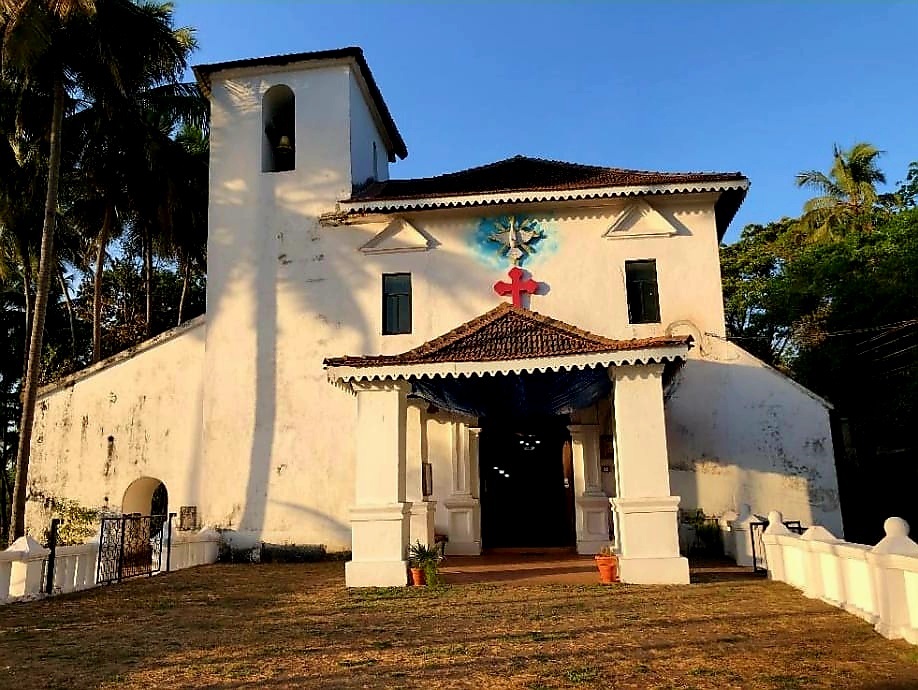
CHRONICLES OF GOAN CHURCHES
The Church at Naroa/Narvem in Divar near the ruins of the fort is dedicated to the Holy Spirit. It has presently a small Catholic population who celebrate the feast 50 days after Easter, i.e. on Pentecost Sunday, which this year falls on June 8.
Origin
During the period of the Portuguese rule of Goa, Naroa was a historical place, due to its specific location, the fort, the soldiers’ regiment in it, the settlement of the fidalgos and a large Catholic population (converts).
According to the old tradition, the construction of the Church in Naroa has a history behind it. It is said that on one occasion when the Captain went to Capela dos Prazeres (later Ermida de N. S. de Divar) to fulfill his spiritual duties, it also happened that on the same day, the Governor General and the Viceroy landed suddenly for an inspection.
Not finding the officials, he made enquires, and he was told that being a Sunday, all the officials and the soldiers had gone to the nearby church (probably St Mathias Church in Malar) for Mass.
Seeing the difficulties of the faithful to fulfill their spiritual duties, he put forward to the officials in Portugal to have a church constructed here. Permission to construct the same was given by the Portuguese King D. Joao III on March 8, 1546, who then wrote a letter to the Viceroy, Dom Joao de Castro (1545-48) that read in part “….. Em Naroa mandareis tambem edificar uma Egreja em honra e com a invocacao de S. Thome.” (In Naroa you shall build also a church and dedicate it to St Thomas). The saint’s statue is situated below that of the Holy Spirit. It is said that the Jesuits administered the church.
The church that exists today was constructed by Diogo da Silveira, a Portuguese captain of the fort of Naroa, known commonly as Narvem, in 1710.
The plague that struck Old Goa had its effects on Naroa, as many of the fidalgos and others left the village to safer places; hence the whole place gave a deserted look, and the church too was neglected.
In 1987, with the financial help from the Catholics, the inner walls of the church were repaired. The Narvem Club financed the new tiles of the Church.
The Church
The Church’s architecture is that of contemporary medieval period; it is a simple two storeyed structure with a single bell tower to the left and a tiled roof over the church and a porch. The choir loft is supported by two solid basalt stone pillars with three arches.
The bell in it belonged originally to the Holy Trinity Church of Old Goa, which does not exist today. It has buttresses walls on both sides and a large pulpit.
The mortal remains of Diogo da Silveira are found in the sanctuary of the church. The church body also has a number of tombstones, the inscriptions on them tell us about the persons who have been buried inside.
The names of the diocesan clergy who served as parish priests have been inscribed on the white marble plaques, which date back to 1579. Since there is no resident priest here, St Mathias parish takes care of its spiritual needs. Mass is celebrated here on Sundays and on other important days. It seems that in the past there were 3 chapels in this village but the only chapel that stands today is in Bairo de Lago area.
The altar
The main altar is dedicated to the Holy Spirit (Orago); the two altars to the left are dedicated to N. S. da Guia (Our Lady of Journey) and to Santas Almas (Holy Souls), the right is dedicated to St Anthony and St Andrew.